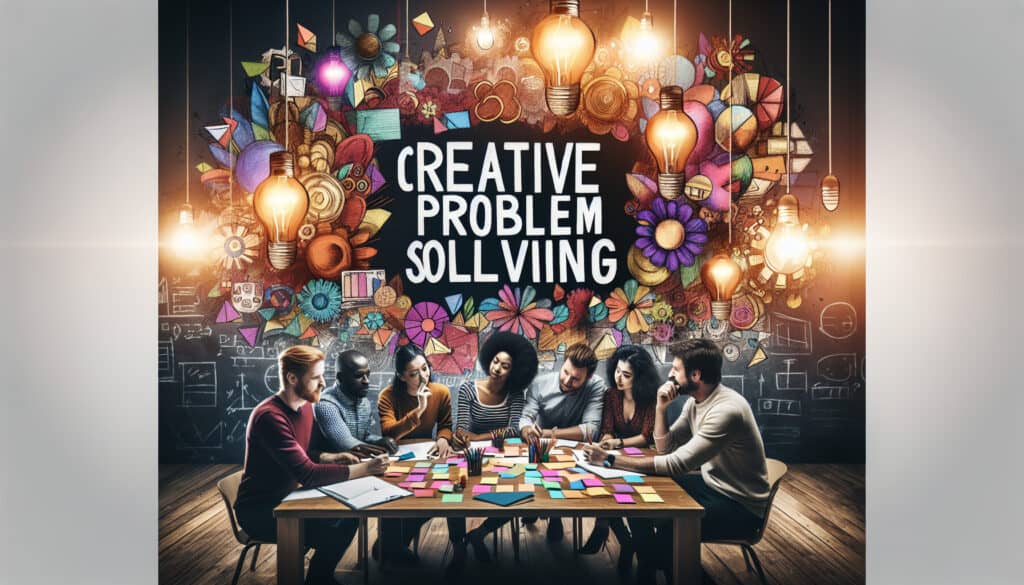A structured process for solving problems or identifying opportunities, conceived by Alex Osborn and Sidney Parnes.
- Metodologie: Lean Sigma, Produzione
Creative Problem Solving (CPS)

Creative Problem Solving (CPS)
- Brainstorming, Creatività, Pensiero progettuale, Innovazione, Tecniche di risoluzione dei problemi, Miglioramento dei processi, Gestione del progetto, Lavoro di squadra, Progettazione incentrata sull'utente
Obiettivo:
Come si usa:
- CPS follows a formal process that involves multiple stages, such as clarifying the problem, generating ideas (e.g., through brainstorming), and developing and implementing solutions. It separates divergent (idea generation) and convergent (idea evaluation) thinking.
Professionisti
- Provides a systematic and repeatable method for innovation; encourages a full exploration of the problem before jumping to solutions; adaptable to various situations.
Contro
- Can be more time-consuming and structured than informal brainstorming; requires a facilitator and commitment to the process for best results.
Categorie:
- Ideazione, Risoluzione dei problemi
Ideale per:
- Tackling complex problems that require innovative solutions by following a structured, multi-stage process.
Creativo Risoluzione dei problemi (CPS) is particularly effective in industries such as product design, technology development, and engineering, where teams face multifaceted challenges requiring innovative approaches. It finds application in sectors like healthcare, where teams tackle issues ranging from patient experience enhancements to medical technology advancements, and in consumer goods, where companies are focused on meeting evolving customer needs and preferences. CPS is ideally implemented during the ideation and prototype phases of product development, allowing teams to explore various concepts and refine their ideas based on user feedback and testing. Cross-disciplinary collaboration among participants such as designers, engineers, marketers, and end-users is encouraged, inviting diverse viewpoints and fostering creativity. This methodology promotes a safe environment for brainstorming without fear of judgment, thereby stimulating a wide array of potential solutions. An example of its application is in automotive design, where teams might address not only aesthetic concerns but also functionality, safety, and sustainability, necessitating a thorough investigation of existing constraints and opportunities before arriving at a final design. The flexibility of the CPS approach allows organizations to adapt it to fit specific contexts and challenges, making it applicable not just in corporate settings, but also in educational environments where students engage in project-based learning and are taught to think innovatively. This structured approach not only increases the likelihood of generating effective solutions but also enhances team cohesion and collective problem-solving capability.
Fasi chiave di questa metodologia
- Identify the challenge or opportunity.
- Clarify the problem statement.
- Generate ideas through brainstorming or other creative techniques.
- Refine and prioritize ideas based on feasibility and impact.
- Develop prototypes or models of selected solutions.
- Test and evaluate prototypes for effectiveness.
- Implement the best solution and monitor results.
Suggerimenti per i professionisti
- Utilize empathy mapping during the problem clarification stage to deeply understand user needs and pain points.
- Incorporate rapid prototyping to test ideas quickly, allowing for iterative feedback and refinement before full implementation.
- Apply the SCAMPER technique during brainstorming to push beyond conventional thinking and refine existing concepts into new solutions.
Leggere e confrontare diverse metodologie, raccomandiamo il
> Ampio archivio di metodologie <
insieme ad altre 400 metodologie.
I vostri commenti su questa metodologia o ulteriori informazioni sono benvenuti su sezione commenti qui sotto ↓ , così come tutte le idee o i link relativi all'ingegneria.
Contesto storico
1949
1950
1950
1960
1960
1960
1960
1940
1950
1950
1958
1960
1960
1960
1960
(se la data non è nota o non è rilevante, ad esempio "meccanica dei fluidi", viene fornita una stima approssimativa della sua notevole comparsa)















Post correlati
Gestione delle operazioni di produzione (MOM)
Sistema di esecuzione della produzione (MES)
Piano di controllo della produzione
Test manuali
Schede di valutazione della movimentazione manuale (MAC)
ManTRA (Strumento di valutazione dei rischi delle attività manuali)